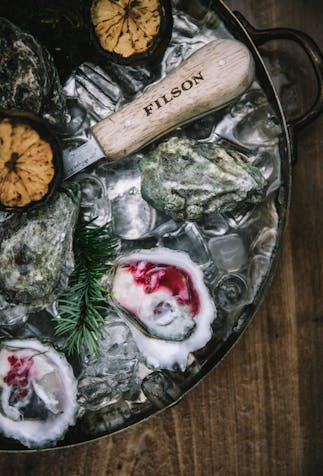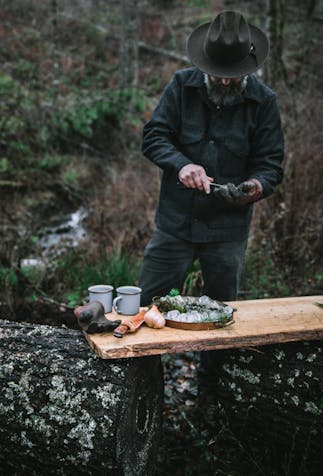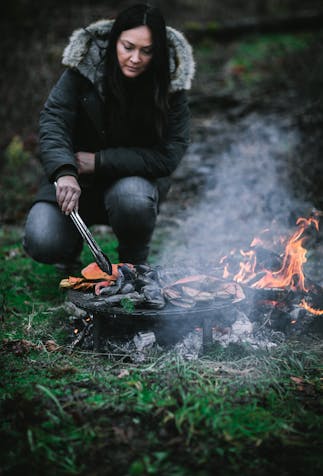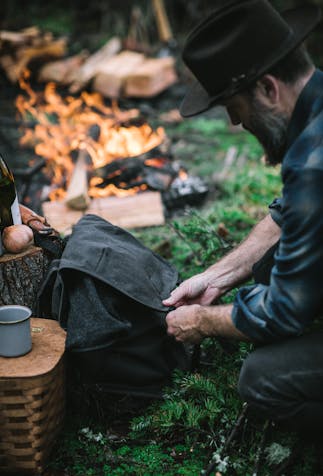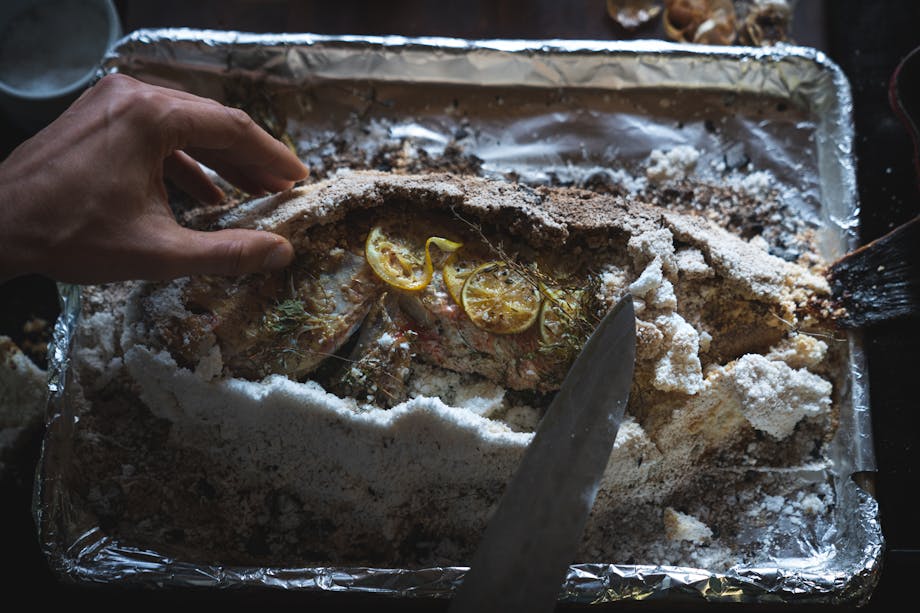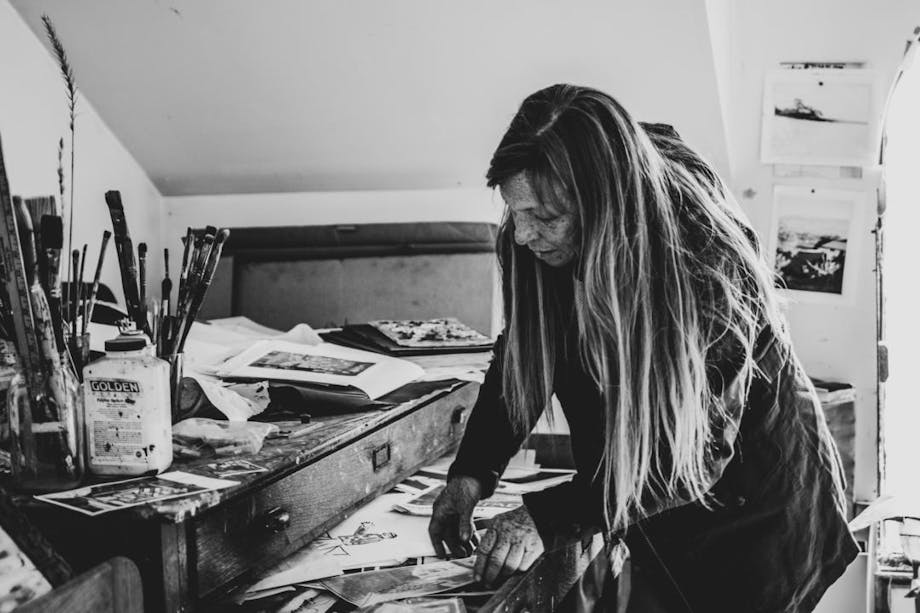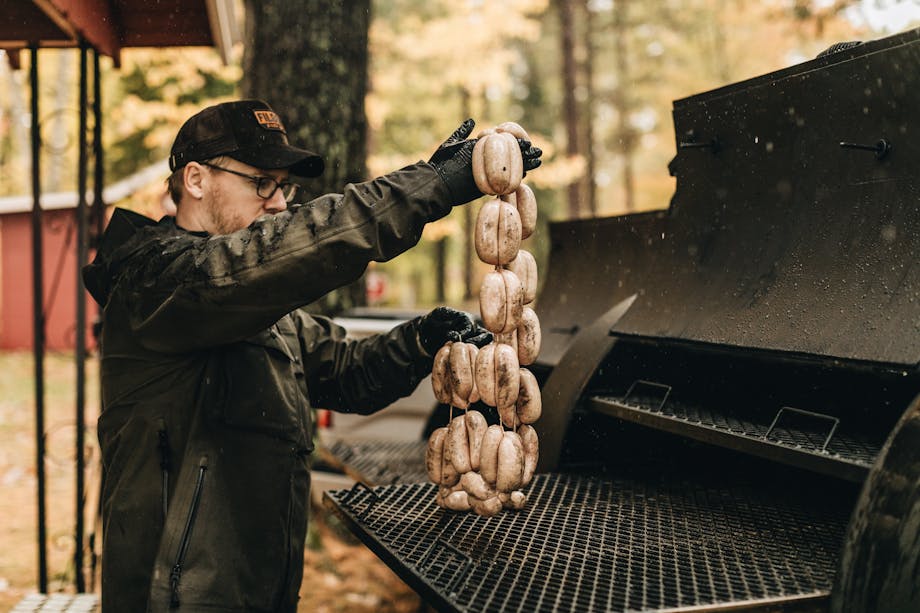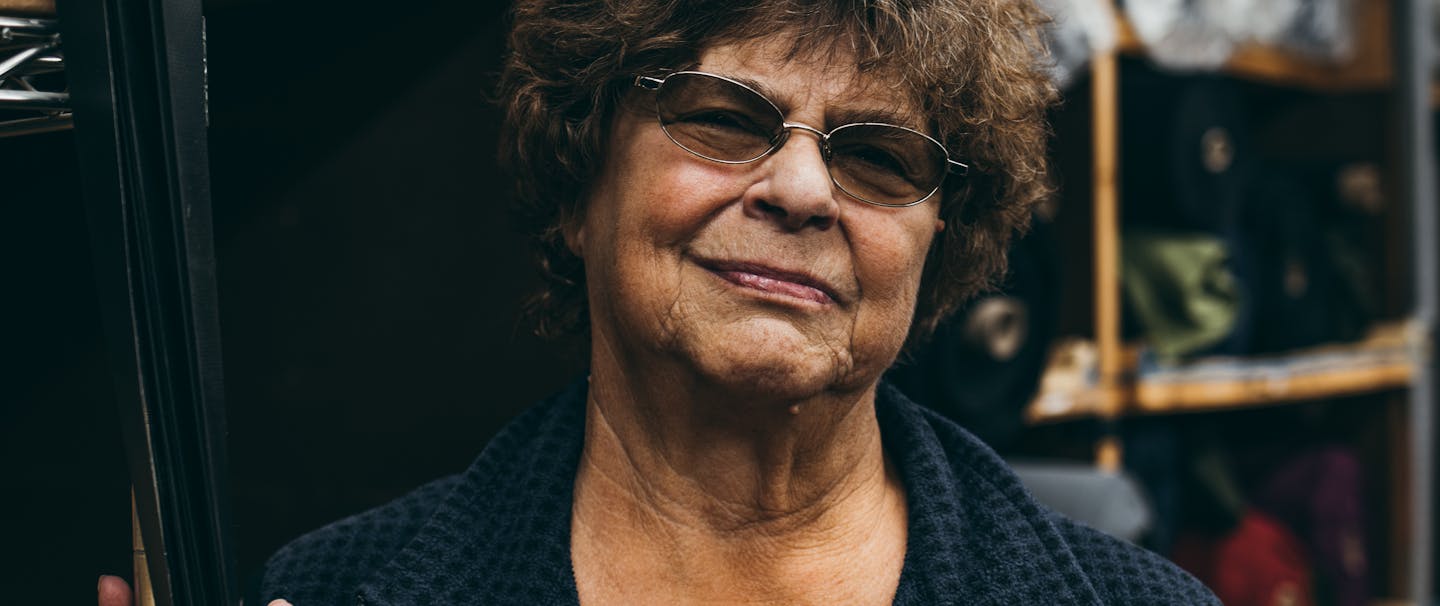Tournant is an open fire cooking and events company. Based in Portland, OR, their business serves as a homage to the Pacific Northwest, to one another, and to all the things they hold dear: food, fire, nature, craft, connection, community, seasonality and sustainability.
What prompted you two to set up shop together?
After years spent cooking in restaurants on both coasts, we met while working at the Portland Farmers Market. We started with an Oyster Social mobile raw bar, serving them on the half-shell for people to enjoy out of hand. We loved how this simple, sensory experience immediately connected guests to the food, the moment and the source.
From there, we continued to dream up other communal feasts where guests would be intimately involved with the food and the dining experience. A series of events followed, featuring meals meant to be eaten by hand, many of which were cooked over live fire: a Korean Bo Ssam, a Spanish Calcotada, a French Eclade de Moules and a Pacific Northwest Crab Boil. The success of these events and our joy in creating them gave rise to our unique farm-to-fire cooking approach and Tournant was born.

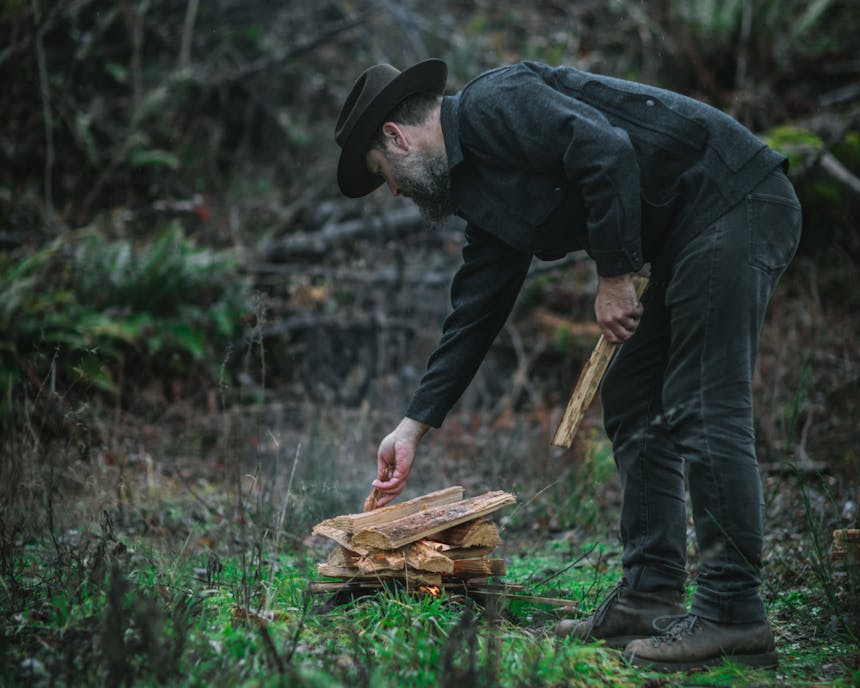
What are the realities of a working couple?
As with any small business, ours takes a lot of time, heart and hard work to make it thrive. Especially in the beginning, you have to wear many hats and are constantly challenged. Being partners in business and in life means we spend almost every moment of our lives either working together or talking about work together. Although it may seem like a lot, we enjoy the reward of creating something together that is constantly growing and evolving.
Although it may be elemental, nothing about cooking outdoors over a fire is easy. The truth is, it takes a tremendous amount of planning, logistics, care, and effort to do it right. Open, honest communication is essential, as is dividing and conquering where possible. The work we do is very demanding physically, so we have to pace ourselves the best we can, surround ourselves with great people and take time to rest and recharge. Perhaps somewhat ironically, what reenergizes us the most is spending time together outside, likely sharing a great meal cooked over a fire.
"The beauty of cooking outdoors over fire is that it makes the four walls of a kitchen unnecessary. It means we can create a meal almost anywhere, from a meadow to a mountaintop, in the forest or by the sea."
What is open-fire cooking? What draws you to it?
Open fire cooking is cooking food over a live fire that is built either on the ground, in a firepit or a raised grill. When we cook outdoors over fire together, it’s like moving meditation. We enjoy a zen-like focus on the food, the fire and the moment. We use a lot of intuition and silent communication when cooking and it connects us together in a unique and powerful way.
The beauty of cooking outdoors over fire is that it makes the four walls of a kitchen unnecessary. It means we can create a meal almost anywhere, from a meadow to a mountaintop, in the forest or by the sea. Compared to cooking in cramped, windowless professional kitchens, cooking outside is literally a breath of fresh air.


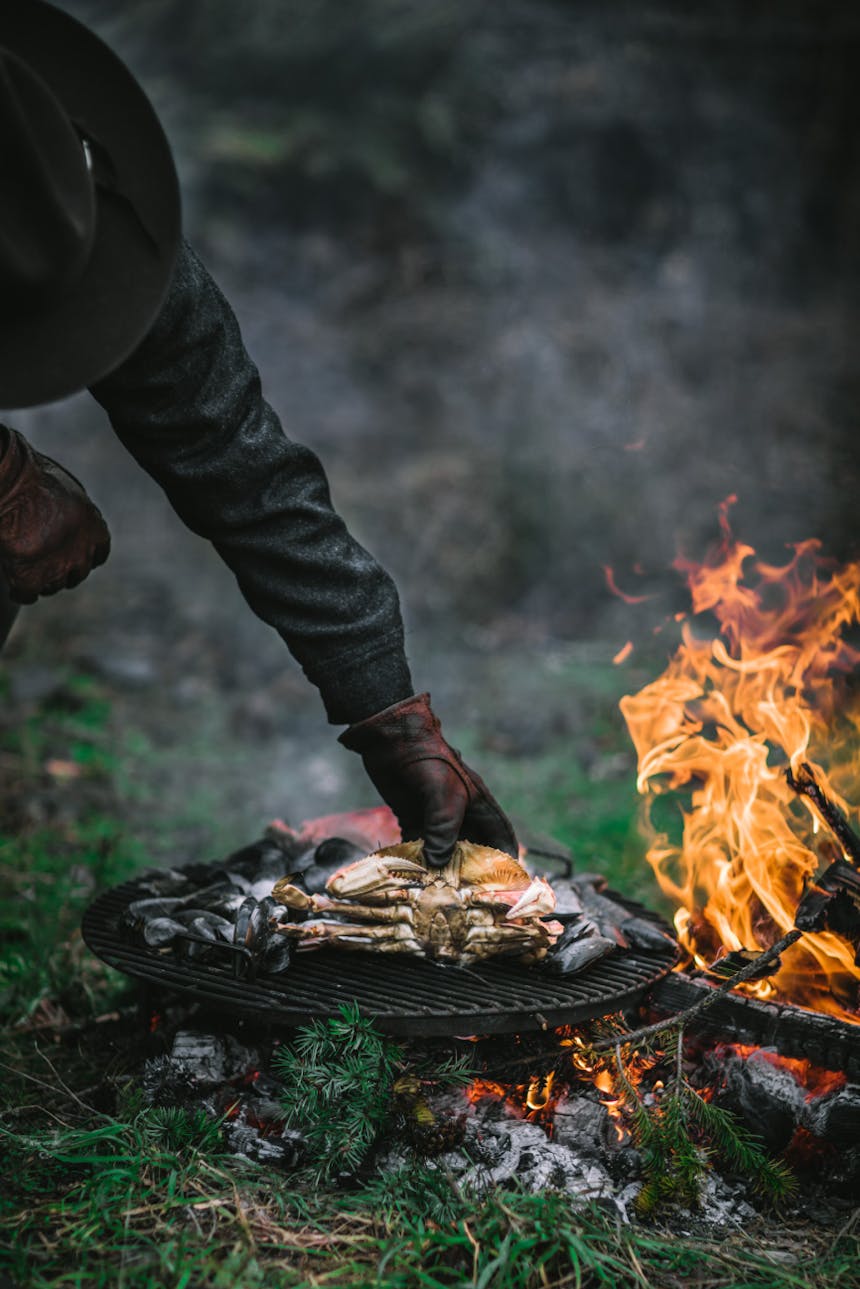
Tell us about your food philosophy?
We believe the best food is prepared simply and honestly, with excellent technique, allowing the ingredients to shine. Our seasonal farm to fire approach to cooking means starting with exceptional ingredients that have been farmed, raised, fished and foraged with care, then treating them with respect.
We strive to create immersive outdoor dining experiences that tell a story about time, place and purpose. Along the way, we’ve had to let go of precision. What we do now is a bit wild and rustic, with bold, smoky dishes that celebrate passion over perfection.
Pine-Needle Roasted Dungeness Crab & Mussels
with Rosemary Balsamic Brown
Butter
BY TOURNANT / SERVES 2-4

This technique is inspired by a coastal tradition in Southwest France known as Éclade de Moules, where mussels are arranged in concentric circles, topped with dried pine needles and ignited. For our Pacific Northwest version, we roast mussels and Dungeness crab over fresh pine boughs, for a hands-on feast filled with the mouthwatering flavors of smoke, pine, and brine.
Needs:
For mussels and crab
2 lbs mussels, cleaned and debearded
2 whole Dungeness crabs, cooked and cleaned
Sufficient firewood and/or hardwood charcoal for a 2×3-foot bed of coals
A grill grate large enough to accommodate the mussels and crabs (at least 2 feet in diameter)
with a tight enough weave that mussels will not fall through the cracks
Four 2-foot lengths of freshly foraged pine boughs
(cedar, juniper, ponderosa, fir, or whatever you can find)
For dipping sauce
1/2 cup unsalted butter
1 sprig rosemary
1 tablespoon aged balsamic vinegar
Flake sea salt to taste
Method:
For mussels and crab
Start the coals and burn down to an even and very hot coal bed. While the coals are heating, arrange the mussels and crab in an even layer on the grill grate. Once the coals are very hot, lay the pine boughs directly on top of them. When the boughs have ignited and are beginning to smoke, lay the grill grate with the crab and mussels directly on top of the burning boughs. Using tongs or fire gloves, rotate the grill grate periodically to ensure the coals are breathing and the mussels and crabs are steaming/roasting evenly. The smoke will be intensely aromatic. Cook for about 6 to 10 minutes, turning the crab over halfway through the cooking process, until all of the mussels are open, bubbling and fully cooked through.
For dipping sauce
Heat the butter in a small saucepan until melted and foaming. Add the rosemary sprig and continue to cook the butter until beginning to brown and smell nutty. Add balsamic vinegar, swirling to combine and remove from heat. Add salt to taste.
To Serve
Remove the grill grate from the coals and set on a heatproof surface, or try landing directly onto additional pine boughs. Serve with bowls of the dipping sauce along with some good bread and only your hands as utensils. Enjoy!
Fresh Oysters on the Half Shell
with Beet-Pickled Shallots & Burnt Lemons
By Tournant Serves 2

Oysters are special. Not only are they a symbol of celebratory occasions everywhere, but these small but mighty filter feeders also uniquely express the place where they are grown. Filtering up to 50 gallons of water a day, oysters are a vital part of keeping our bays and waterways clean. Plus, these little sips of the sea are simply delicious.
Needs:
A dozen oysters
1 tablespoon finely diced shallot
1/4 cup juice from a jar of pickled beets
2 lemons, sliced in half across the equator
Method:
Combine diced shallots with beet pickling juice and set aside to marinate. Grill lemons, cut side down, directly on the grate of a grill over a wood fire until the cut surface is deeply charred and blackened. Alternately, sear in a dry cast-iron skillet. Shuck oysters and arrange on a bed of moss, fern, pine, or other foraged greens. Alternately, arrange on a platter of ice. Serve with the beet pickled shallots and burnt lemons.

